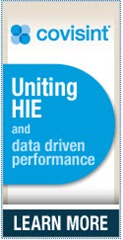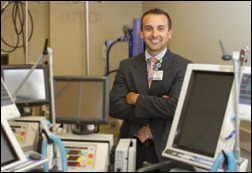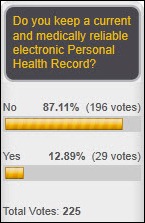The UHC hiding the breach notice page is one thing but it looks like Nebraska is suing Change Healthcare for…
Monday Morning Update 7/4/11

From Michigan Wolverine: “Re: Munson Healthcare downtime. At least the administrator was truthful about the ‘chaos,’ if not about the patient care.” The three-hospital Michigan system loses all connectivity to the world when a planned switch to a backup fiber optic circuit fails. Applications, paging systems, wireless devices, and their IP telephones all went down hard, requiring 4.5 hours for recovery.
From The PACS Designer: “Re: 3D Web browsing. WebGL permits 3D viewing if you use Google Chrome (coming soon to Firefox 6 ). TPD thinks healthcare may find the web 3D feature helpful in following the diagnosis of conditions, such as viewing a colonoscopy result along with healthcare treatment videos. An excellent example to view in 3D on Chrome is the WebGL Iceberg Demo. ”
From Peter: “Re: thoughts on Google Health. Brilliant, lucid, and real. Thanks, Mr. H :)” This comment came all the way from New Zealand, so I figured I could at least mention it (especially since I appreciate it).
From Ilya: “Re: Johns Hopkins. Going with Epic for ambulatory to start in a project called Ambulatory First, with a statement from the JHM CEO that ‘we will continue to look for systemwide opportunities for the Epic system to support our health care reform initiatives and goals.” Ilya sent over the CEO’s e-mail announcement, which also points out that Hopkins has more than a dozen patient records systems that are going away. I’m sure additional planning and approvals will be required, but the tea leaves seem to say that Epic will replace a bunch of Hopkins systems very soon, most notably Allscripts Sunrise.
From A CIO: “Re: job change. You recently mentioned my new job. Your reach across the industry is amazing. I’ve heard from people I haven’t been in contact with for years.” I really love hearing that since it’s a blast to get people reconnected just by mentioning them in some way. Maybe I should profile one reader each week with a mini-bio and a photo just to see who reaches out to them.
From McOffice: “Re: executive offices. I was in the office of McKesson CEO John Hammergren a few years ago. It was understated and functional like a working manager’s office, but the view of the Golden Gate Bridge was pretty sweet.”
From Lusitania: “Re: executive offices. McKesson executives in Westminster, CO have very modest offices. Only a few have line-of-sight to the Rocky Mountains – most just see cubicles or walls. The cubes on the west side actually have a better view. The largest offices only have room for an additional four-top conference table. Otherwise, even our lowest directors have offices that match in size and furniture quality (basic Office Depot mahogany).”
From Cam: “Re: executive offices. We’re in an old mill right on a river between two waterfalls with 20-foot ceilings, wood, and brick. We fish out the window. The CEO’s office is filled with Legos.” I love old mills on rivers, with rough brick and massive wood beams. Somehow it feels right to be working on something high tech in historical, industrial surroundings. Cam was less philosophical when I made that flowery statement in responding to his e-mail, replying with tongue in cheek that, “except our history has to do with exploiting children in a mill setting and we work for pediatricians .”
From Delbert: “Re: executive offices. Judy Faulkner’s is big, but unassuming. Prairie style with a desk area in one part and an almost living room seating area. It’s right by the entrance to one of the buildings, so visits arrive via a sidewalk that goes right by her windows. Definitely no evidence of pretense of wealth and power in her digs.”
From Antoine: “Re: executive offices. NextGen’s two executives share a single office. No parking space, no special bathroom, they swipe the same security card to get into the building. The SVP has the exact same office as her managers – no windows. Very much the NextGen vibe, modest and unassuming.”
From IntelliDoze: “Re: IntrinsiQ. After looking for several years, it finally has a buyer in ABSG (AmeriSource Bergen Specialty Group). The press release will come out Tuesday. All of the employee options are under water, but on the bright side, they will be asked to sign two-year non-competes! The only folks making money are private equity firm Accel-KKR, not a huge return, but happy to get any return after buying at the top of the market.” Unverified. IntrinsiQ makes the IntelliDose chemotherapy protocol management tool and oncology-specific data mining applications.
From Fess Up: “Re: nextEMR. Those guys are still showing the CCHIT 2011 logo on their site even after you reported that CCHIT ordered them to take it down. They simply didn’t receive that certification.” They now have both the ONC-ATCB and CCHIT logos on their site, so I guess that’s some improvement – they added the correct one, but failed to take down the incorrect one.
Happy Independence Day to my fellow Americans. Some contrarian US history: the Declaration of Independence was signed on July 4, 1776 when the 13 insurgent colonies that were at war with their own British government announced that they were illegally breaking off and starting their own country. It’s very much like when the Southern states announced their secession from the Union in the 1860s, except the British weren’t quite as brutal in using scorched earth force against civilians to keep their empire intact. It was their Vietnam, a humiliating defeat at the hand of cunning rebels that we celebrate annually with hot dog eating contests and China-sourced pyrotechnics. My flag is waving today to celebrate our country, even though its history (both old and new) is uncomfortably less virtuous than they teach in school. But in any case, happy Fourth of July, if you must call it that (and Merry Twenty-Fifth of December).
My Time Capsule editorial from five years ago this time around, squinting in the bright sun after being buried since 2006: Vendors Should Make Software That Crusty Night-Shift Nurses Can Love. I veered into an overly broad generalization about nurses and computers that will probably raise hackles all over again: “Looking over their computer shoulder is like watching your kid play tee-ball – you try to help them by sending powerful telekinetic messages (‘Press Shift-Tab … Shift-Tab’) or with surreptitious body English.”
Listening: Skins, almost new from Buffalo Tom, a Boston alt rock guitar band that has drifted in and out of obscurity since 1986, but has always been good. Great road trip music that also wins my highest and rarely awarded honor: it has gone on my gym MP3 player.
A good Google Health epitaph from Zak Kohane at Children’s Boston: “Google is unwilling, for perfectly good business reasons, to engage in block-by-block market solutions to health-care institutions one by one and expecting patients to actually do data entry is not a scalable and workable solution.” Let me be clear in saying that Zak is brilliant (and not just because I know he reads HIStalk and would make a fine writer for it, hint hint). Check out this provocative article in which he suggests that computers could replace doctors for a lot of the protocol-driven work doctors do, which probably elicited predictable “doctors aren’t fry-slinging teens working at McDonalds” knee-jerk reactions instead of thinking about his point – do we really need doctors to do a lot of what doctors do instead of more important stuff? (and he’s a doctor, so his opinion counts double, not to mention that the military already delivers a large amount of care, including that on the battlefield, using non-physicians who have undergone focused training):
We want our healthcare providers, and particularly our physicians, to be completely up-to-date across the exponentially growing knowledge base of medicine, from drug side effects to genomics. Yet, in this era of “evidence-based medicine,” we also expect these same physicians to follow well-defined protocols (algorithms on paper or on in electronic medical record systems) so that each patient receives the care that panels of experts have determined to be best. Just as McDonald’s follows sophisticated but regimented systems to make and sell its French fries and shakes.
So, which is it? Is each patient encounter a potential virtuoso tour of the medical arts and biomedical applied sciences? Must each doctor be the equivalent of Todd English? Or is it enough that each patient receive an honorable, workman-like execution of the best guidelines that are available? It is becoming increasingly apparent that we cannot afford a model that claims both kinds of performance delivered by the same person with the same job description.
Welcome to new HIStalk Platinum Sponsor Covisint, part of Detroit’s Compuware. The company enables “information ecosystems” that allow all healthcare players to securely communicate and collaborate. Its ExchangeLink platform connects hospitals to other providers (physicians, post-acute, referrers) by supporting workflow-driven fax solutions, a secure inbox for online delivery, and document exchange with practice EMRs. It has all the pieces and parts built in: identify management, MPI, and record locator service, and is used by states and HIEs to share information on a large scale to improve quality and coordinate care. Covisint’s App Cloud offers third party apps for e-prescribing, lab orders and results, referrals, disease management, EMR/PHR, and others from names such as Epocrates, DocSite Registry, Ingenix CareTracker, Allscripts, Dossia, and DrFirst. The company just won a MSHUG innovation award for its work with Vermont Blueprint for Health in providing a central registry, clinical decision support, and a care team portal. Many thanks to Covisint for supporting HIStalk.
Here’s a Covisint overview video that I found on YouTube.
A Bloomberg Businessweek post by business intelligence expert Leonard Fuld reminds everybody that his war game simulation predicted that Allscripts needed to merge with another company to avoid becoming an also-ran (it’s not mentioned whether the simulation gave Allscripts the idea). Like many prognosticators, he doesn’t mention other predictions that may not have panned out, like those involving McKesson and GE Healthcare in the same scenario (or his March 2007 statement that “the all-powerful MySpace, with its 130 million-plus members, seems invincible.”) Still, he seems to know his stuff when it comes to competitive intelligence.
Texas Health Presbyterian Hospital Dallas begins RFID equipment tracking, citing studies indicating that nurses spend up to 15% of their time tracking down needed equipment. The 898-bed hospital says it’s saving $30K per month by avoiding equipment rental. The vendor is Intelligent InSites tied into a Skytron ZigBee wireless network. The hospitals plans to use more RTLS apps tied into its systems (Epic, TeleTracking, and Siemens Invision).
Tampa-based software vendor MedHOK releases 360ACO, an analytics solution for complying with proposed CMS ACO rules.
A reader sent over the JAMIA article that looked at “errors” with e-prescribing. I’d take it with a large grain of salt. The study did indeed use prescriptions from 2008, even though it’s just now being published. Since the retail pharmacies faxed over the de-identified prescriptions, they had no way to know which were truly e-prescribed vs. just printed off from a computer system. Potential ADEs included the potential of harmless issues, like rash or nausea. Most of the “errors” involved omitted or unclear information, such as how long to take the med (which was probably already discussed with the patient and assumed from the quantity prescribed). They also could not make any conclusions about particular e-prescribing or pharmacy systems and had no way to assess how practices implemented their systems or how physicians were trained to use them. To me, the only valid conclusion is that doctors could turn on more edit-checking capabilities of their e-prescribing systems to reduce inefficient clarification callbacks from pharmacies. I don’t see much patient safety impact. Unfortunately, the rags often pick up a story like this and run with it, adding misleading but sexy headlines and trying to make the conclusions seem more dramatic.
The numbers are unchanged from my 2007 survey: a scant 13% of the most healthcare IT-savvy people on the planet keep their medical information in a PHR. New poll to your right: who is most responsible for the lack of sharing of patient information?
This is strange: Walmart is donating the time of its 142 in-house lawyers to Medicaid patients of Arkansas Children’s Hospital, taking on the government agencies and schools that don’t provide those patients with the benefits to which they believe they are entitled. The company says it will be “facilitative” rather than “adversarial” to Medicaid. If you’re a taxpayer unhappy with the huge entitlement programs you’re funding through your labor, this is probably not the best news you’ve heard today.
Thanks to the companies that supported HIStalk in June by starting or renewing their sponsorship. I do nothing to solicit sponsors except to e-mail a little handout PDF that Inga and I threw together when someone asks for one, so I appreciate those that persist in overcoming our appearance of indifference to support what we do.
Unrelated, but kind of amusing: the hammy, preachy host of the endlessly re-run, 2008-cancelled To Catch a Predator (“Have a seat over there. What do you think would have happened if I wasn’t here and a 14-year-old girl was home alone?”) is himself caught on hidden camera as he engages in nocturnal hanky panky with a hot TV anchor 58% of his age and 100% not his wife. Unlike the sickos his show entrapped for almost-honorable reasons (not to mention ratings), he wasn’t unnecessarily pounced on by a dozen camera-hogging, Taser-wielding police officers as he tried to leave the hotel.















RE: Poll question “Who is most responsible for allowing the continued existence of silos of disconnected patient information?”
How about an option for lawyers and law-makers?
Zak Kohane’s comments sound like they’ve fallen right out of the mouth of Larry Weed (the guy who invented the SOAP charting method). We had him at our UC years ago and he shocked the crowd by talking about his problem knowledge coupling ideas. He then started PKC.com (I don’t think he’s there any more).
I am responding to your comparison of the Revolutionary War with the Civil War, in which you said, “the British weren’t quite as brutal in using scorched earth force against civilians to keep their empire intact”. You might need to review your history of the Confederacy. For example, consider the Lawrence Massacre, in which pro-Confederate forces massacred almost all civilians in the city. Or consider the Confederacy’s use of concentration camps to hold Union prisoners of war. Or consider Robert E. Lee’s refusal to exchange any “negro” union soldiers, because Lee considered those individuals to have become the property of the Confederacy. Or consider the Poison Spring massacre.
I am always amazed to see southerners try to re-cast their history as somehow noble, while ignoring the brutality and bigotry of the Confederacy.
IMO “Medical care” and “how McDonald’s makes and sells French fries and shakes” are terms that simply do not belong in the same paragraph. This shows a severe decline in our culture, above all else.
Also – the URL for the Munson story is here. from the Record Eagle newspaper.
RE: 3D browsing with WebGL – the site http://www.biodigitalhuman.com is a great example of medically-oriented WebGL app (view it with Google Chrome!)
Why does it seem so strange that Wal-Mart, which pays a “poverty” wage scale to most of its associates would not want to use its best corporate resources to turf it’s employee health insurance liability to a third-party – in this case State government. Ultra low labor costs and no benefit obligation, how sweet a deal is that? ;( Happy Labor Day!
Loved the “contrarian” view if the Civil War. It’s always comical watching Confederate apologists trying to justify their fight to maintain slavery.
Interesting – Walmart doesn’t provide healthcare benefits to much of their workforce, forcing them onto the Medicaid rolls. Then they supply attorney’s to help these individuals get government funded healthcare. How much does this Walmart real estate attorney really know about healthcare law?